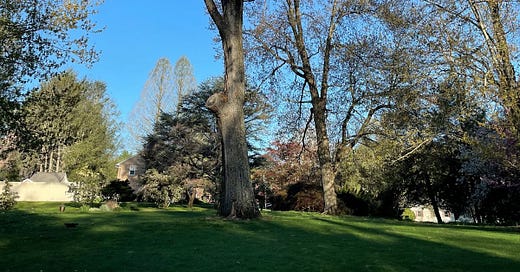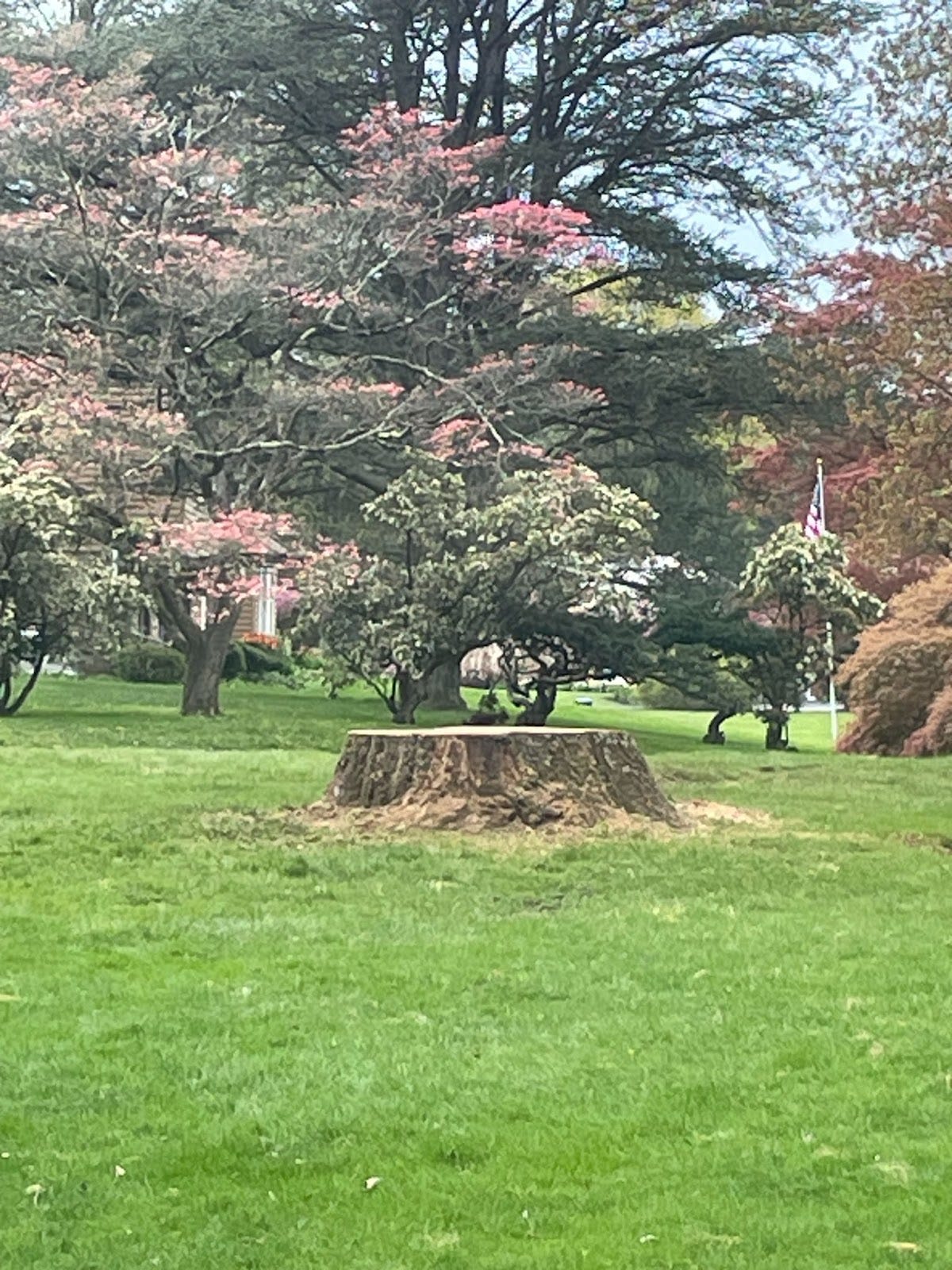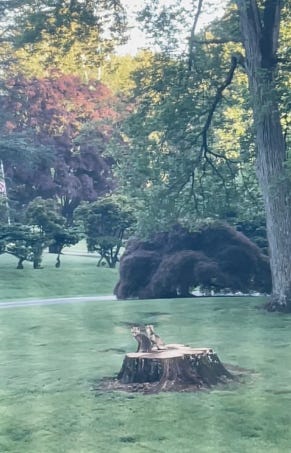"Change is the only constant in life." Heraclitus
To discover the age of the white oak that until recently stood in our front yard, The Google said to measure the trunk and then multiply the inches by 5. The resulting number is about how many years the tree has existed on our earth.
And so, “our” oak was approximately 250 years old. As a mere sapling it very likely saw Revolutionary War soldiers - perhaps Washington himself - tread through what is now our front yard. After maturing for 75 years, our oak surely shaded some of the 100,000 people fleeing the barbarism of human enslavement via the nearby Underground Railroad on their way to points North and the hope for relative freedom.
A hundred years after that, our home was built and successively housed a few different families. By the time we got here, so amazed by the woodsy acres, stream, and expansive lawn, our oak had reached its decline stage, though we didn’t know it just yet.
Often wandering our home in the small hours as moms do, I’d check our sleeping children, greedily savoring every bit of them in their still perfection. Then, peering out the front window, I’d find comfort seeing the shadowy arms of our oak circling our home. Consummate masculine protector by day, our oak transformed into the fiercely feminine nurturer under the moonlight while we rested.
Storms came and went: wind, snow, sogginess, cold, and heat. Our oak dropped and shed small chunks and giant limbs. An entire half of the soaring branches stopped leafing out (we couldn’t acknowledge it at first) and the expert tree man patched it up best he could, then broke the sad news: our oak hadn’t much longer. One theory as to why - other than inescapable impermanence - was possibly because a dug septic tank decades ago disturbed our oak’s centuries-old roots. It is unreasonable to expect a withstanding of every slight and hardship, afterall.
With several wooded acres as a backyard, we certainly have lost trees before. Once on a sunny, windless day, I heard a crack so piercing I couldn’t identify what it was at first. For just a moment I got that awesome nature feeling - like being in a storm-tossed boat when you realize how inconsequential you truly are - but it was a just an older Beech apparently deciding that day was the day to give up bending, to finally rest fully horizontal. One dramatic flourish and the world, if it was listening, would know.
More trees fell - across the paths, over the stream. The Emerald Ash Borer, such a vibrant, sparkly green, is actually a devastating invasive species in 36 states now, responsible for the demise of tens of millions of Ash trees. And yet birds and critters create new homes, bees relocate and get on with their work, and the landscape alters around the new fallen structures. Everyone adapts. Except Steve and me. We grieve each one, wondering how we let these things happen on our watch, clearly drawing parallels to how fast life seems to cycle through its phases these days.
The invasive pest, Emerald Ash borer
I began to fear our oak’s dwindling strength, especially when Steve mowed and tidied and beautified for hours and hours week after week beneath its creaking. How much longer could our oak “lift her leafy arms to pray”? During the pandemic we held a studio recital on the front walk, and I couldn’t shake the feeling of impending doom… it was the vibe in those dark years as we all recall. Could the determination to adapt to the madness around us, to lift the precious voices of our bewildered students, to connect and entertain, end in some sort of hideous disaster?
But we were sad and indecisive. How could we unceremoniously murder our oak? What would be left? We thought about hiring a sculptor, but couldn’t quite picture a giant bear or owl or Gryphon standing forevermore in our suburban yard. Perhaps just a flat table top for our someday-grandkids to scramble over, or make into a stage, or lay out a picnic.
It is the in-betweens that cause the most pain, like squeezing through the eye of a needle, unsure of the timing of leaving things behind, the mystery of what may lay ahead, and whether we have the gumption and alacrity to pass through. How alluring, we imagine, to not move at all, maintaining command in all things. A beautiful illusion we already know from instinct or experience to be far more ruinous.
It came down over two days, our beautiful, faithful oak. Six industrious people worked with their backs, rackety saws, ropes and pulleys, and fearlessness. I watched from the safe side of my window as one or two of them scrambled up to the height of 6 stories at least, lassoing, cutting, predicting how and where parts of our oak would fall, bit by bit. “I’m so sorry”, I whispered more than once.
Once the carnage was cleared, great wounds were revealed all about the lawn where centuries of striving upward had crashed down in an instant. Steve and I grieved together - careful not to display to the world - while coming to terms with the loss. What other choice is there? However, within a single day I saw a huge pileated woodpecker exerting ravenously at some treasure trove newly exposed, and I was reminded to look for the gift or opportunity in every change.
Last week at daybreak I looked out the same front window ready to remember our oak in its past glory, or more likely be crestfallen at what used to be. What I saw was just too perfect:
“The pain passes, but the beauty remains” Pierre-Auguste Renoir
Voice lessons with Barbara: www.WAVS.info
Well Coachings with Barbara: www.BarbaraShirvisWellness.com
May you live in ease and kindness, with a free heart.










A beautiful narrative for your beloved tree. The trees, the trees, the trees. 💕 Thank you for sharing.
So thoughtful and heartfelt. Xoxo